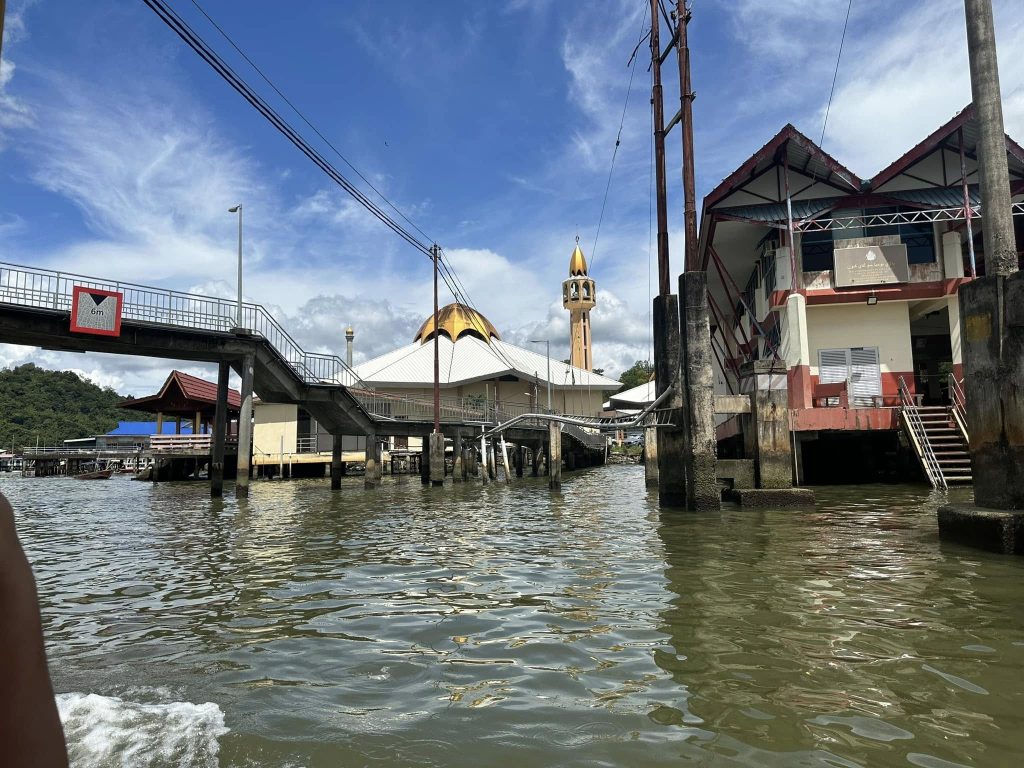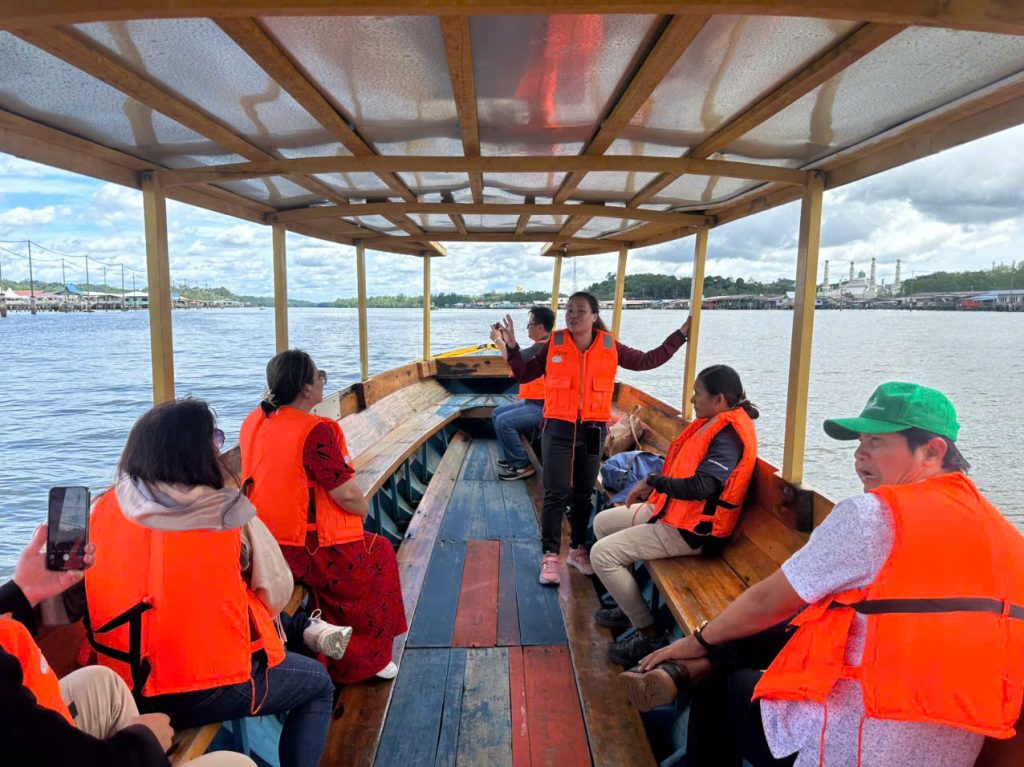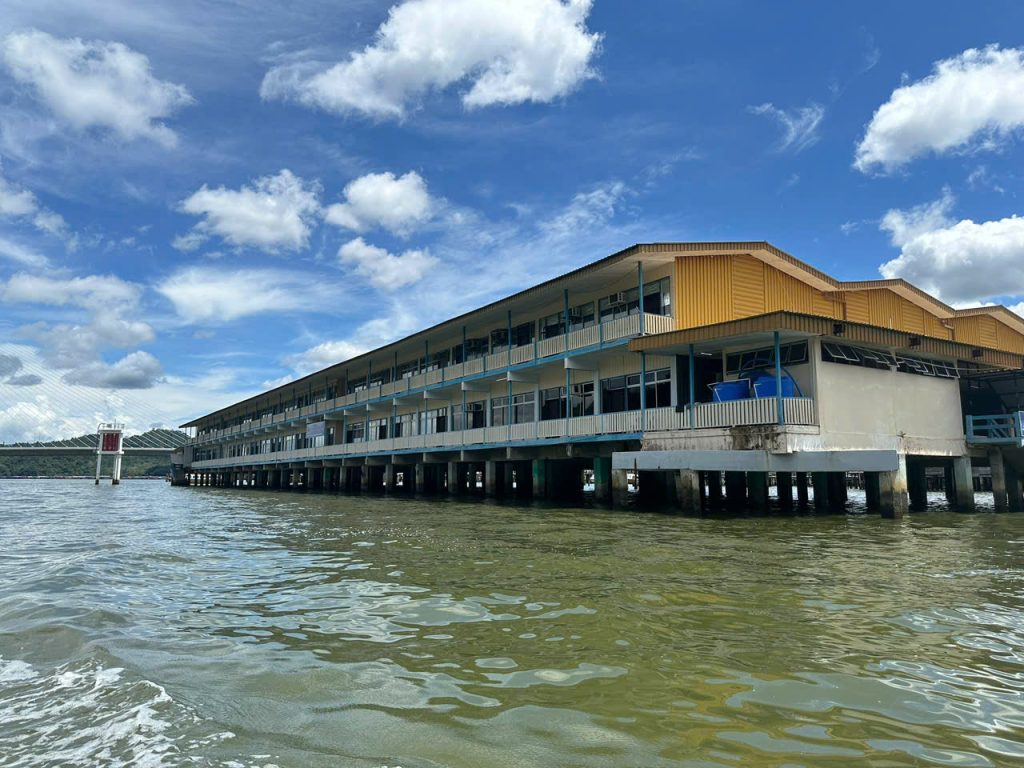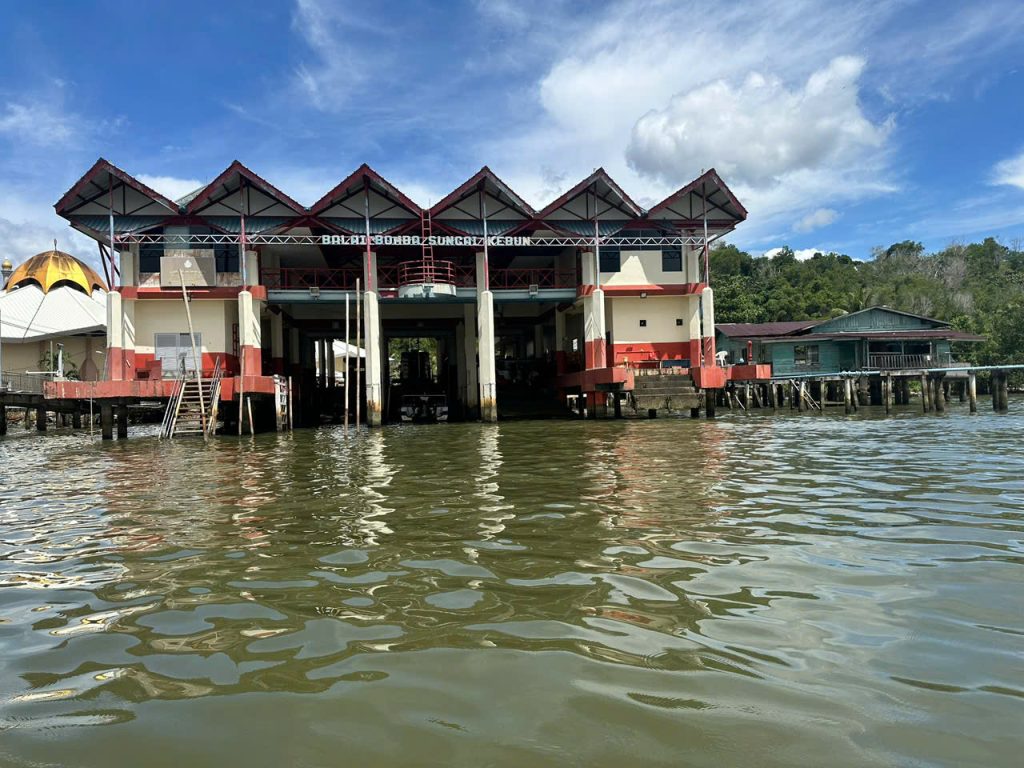This post is also available in:
Tiếng Việt (Vietnamese)
In the context of sustainable tourism development, communities residing in riverine, coastal, or floating village areas are increasingly recognized as cultural spaces with the potential to become unique community-based tourism (CBT) destinations.
In Southeast Asia, Kampong Ayer – a floating village with over 600 years of history in Brunei – serves as a paradigmatic example of how a traditional community can preserve cultural identity, adapt to modernization, and effectively harness tourism potential.
This article analyzes three notable successes of Kampong Ayer in developing community-based tourism, drawing lessons for Vietnamese fishing and raft villages.
Preserving Traditional Living Spaces Alongside Tourism Development
Kampong Ayer is the world’s largest riverine settlement, accommodating over 9,000 residents across approximately 30 floating villages interconnected by more than 30 kilometers of wooden and concrete walkways. For over six centuries, the community has maintained its distinctive stilt-house architecture, river-based livelihoods, and communal cultural practices such as handicraft production, fishing, local cuisine, and Islamic traditions. Notably, Kampong Ayer is not a static cultural exhibit but a dynamic, living community.
The preservation of this living space is intrinsically woven into the tourist experience. Visitors engage with authentic elements of daily life – exploring traditional homes, observing artisans crafting wooden boats, sampling local kuih and beef soto, and interacting with residents. This immersive approach not only contributes to safeguarding intangible cultural heritage but also supports community livelihoods.
Integrating Modern Infrastructure to Enhance Quality of Life
A key factor in Kampong Ayer’s success lies in its ability to incorporate modern infrastructure into its traditional setting without compromising cultural identity. Homes are equipped with electricity, running water, television, and high-speed internet (100 Mbps) provided via fixed wireless networks to mitigate cable theft. The village also has educational facilities (primary, secondary, and Islamic schools), a police station, fire department, health center, and cultural hub.
The purpose of infrastructure development is not to urbanize but to uplift living standards and reinforce self-governance, thereby enabling sustainable tourism. This exemplifies that “preservation” is not synonymous with stagnation but reflects the adaptive capacity of living heritage.
Kampong Ayer’s tourism offerings are also designed around endogenous community resources. A government-led walking route connects five key villages – Kg Lurong Sikuna, Kg Setia ‘A’, Kg Tamoi Ujung, Kg Peramu, and Kg Bakut Berumput – inviting tourists to participate in activities like crafting, cooking, meeting village leaders, or enjoying tea in floating homes.
Homestays such as Kunyit 7 Lodge, a family residence from the 1920s, provide visitors with authentic “live like a local” experiences. Tourism revenues improve household incomes and incentivize the preservation of cultural traditions.
Importantly, community involvement is central to tourism management in Kampong Ayer – from product development to service delivery and visitor engagement. This reflects the ethos of genuine CBT rather than token participation.
The Role of Policy and Governmental Support
Kampong Ayer’s success is underpinned by Brunei’s government strategy. The state invests not only in maintaining public infrastructure but also in community housing (e.g., the Kampong Bolkiah project), social welfare, and promotion of floating cultural tourism as a national priority. Government collaboration with local communities is essential to ensuring long-term sustainability of the tourism model.
Implications for Vietnamese Fishing and Raft Villages
Vietnamese floating and fishing villages such as Cửa Vạn (Hạ Long), Tân Lập (Long An), and Long Sơn (Vũng Tàu) share similar socio-ecological characteristics with Kampong Ayer: water-based habitats, traditional livelihoods, and unique cultural identities. However, many of these villages struggle to balance heritage conservation with tourism development.
In several areas, tourism remains fragmented and uncoordinated, lacking integrated planning and clear mechanisms for community ownership of tourism initiatives. Weak infrastructure, environmental degradation, and relocation without adequate livelihood alternatives have led to the erosion of cultural identity and the disintegration of traditional living spaces.
From Kampong Ayer’s experience, several critical lessons emerge:
- Community-based tourism must prioritize local participation and benefit-sharing.
- Long-term policy frameworks supported by infrastructure investment are essential.
- Tourism development should focus on preserving “living culture,” not merely displaying “dead heritage.”
Kampong Ayer proves that a floating community-based tourism model can preserve cultural identity, accommodate modern needs, and create sustainable economic opportunities. This model offers valuable insights for Vietnam – a country rich in fishing village ecosystems but still underutilizing their potential.
In the face of increasing climate change and urbanization pressures on traditional water-based communities, adapting Kampong Ayer’s approach could offer a pathway for revitalizing community-based tourism in Vietnam’s floating villages.












